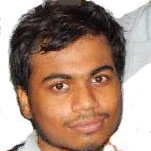International Journal of Image, Graphics and Signal Processing (IJIGSP)
IJIGSP Vol. 8, No. 2, 8 Feb. 2016
Cover page and Table of Contents: PDF (size: 1838KB)
Improvised Salient Object Detection and Manipulation
Full Text (PDF, 1838KB), PP.53-60
Views: 0 Downloads: 0
Author(s)
Index Terms
Jaccard index, saliency maps, segmentation, desaturation
Abstract
In case of salient subject recognition, computer algorithms have been heavily relied on scanning of images from top-left to bottom-right systematically and apply brute-force when attempting to locate objects of interest. Thus, the process turns out to be quite time consuming. Here a novel approach and a simple solution to the above problem is discussed. In this paper, we implement an approach to object manipulation and detection through segmentation map, which would help to de-saturate or, in other words, wash out the background of the image. Evaluation for the performance is carried out using the Jaccard index against the well-known Ground-truth target box technique.
Cite This Paper
Abhishek Maity,"Improvised Salient Object Detection and Manipulation", International Journal of Image, Graphics and Signal Processing(IJIGSP), Vol.8, No.2, pp.53-60, 2016. DOI: 10.5815/ijigsp.2016.02.07
Reference
[1]Dhar, S.; Ordonez, V.; Berg, T.L., "High level describable attributes for predicting aesthetics and interestingness," In CVPR, vol., no., pp.1657,1664, 2011
[2]Goferman, S.; Zelnik-Manor, L.; Tal, A., "Context-aware saliency detection,"In CVPR , vol., no., pp.2376,2383, 2010
[3]Tie Liu; Jian Sun; Nan-Ning Zheng; Xiaoou Tang; Heung-Yeung Shum,"Learning to Detect A Salient Object", In CVPR, vol., no., pp.1,8, 2007
[4]C. T. Vu and D. M. Chandler. Main subject detection via adaptive feature selection. Int. Conf. Image Proc., pages 3101–3104, 2009.
[5]S. Avidan and A. Shamir. Seam carving for content-aware image resizing. ACM Trans. on Graphics, 26(3), 2007.
[6]B. Suh, H. Ling, B. B. Bederson, and D. W. Jacobs. Automatic thumbnail cropping and its effectiveness. In UIST, pages 95–104, 2003.
[7]C. Rother, L. Bordeaux, Y. Hamadi, and A. Blake. Autocollage. ACM Trans. Graph., 25(3):847–852, 2006.
[8]U. Rutishauser, D. Walther, C. Koch, and P. Perona. Is Bottom-Up Attention Useful for Object Recognition? In CVPR, volume 2, 2004.
[9]L. Itti, C. Koch, and E. Niebur. A Model of Saliency-Based Visual Attention for Rapid Scene Analysis. IEEE Trans. on PAMI pages 1254–1259, 1998
[10]L. Itti and C. Koch. Computational modelling of visual attention. Nature Reviews Neuroscience, 2(3):194–204, 2001.
[11]D. Walther and C. Koch. Modeling attention to salient proto objects. Neural Networks, 19(9):1395–1407, 2006.
[12]N. Bruce and J. Tsotsos. Saliency based on information maximization. Advances in neural information processing systems, 18:155, 2006.
[13]J. Harel, C. Koch, and P. Perona. Graph-based visual saliency. Advances in neural information processing systems, 19:545, 2007.
[14]O. Le Meur, P. Le Callet, D. Barba, and D. Thoreau. A coherent computational approach to model bottom-up visual attention. IEEE Trans. on PAMI 28(5):802–817, 2006.
[15]X. Hou and L. Zhang. Saliency detection: A spectral residual approach. In CVPR, pages 1–8, 2007.
[16]C. Guo, Q. Ma, and L. Zhang. Spatio-temporal saliency detection using phase spectrum of quaternion fourier transform. In CVPR, 2008
[17]L. Itti and P. Baldi. A principled approach to detecting surprising events in video. In CVPR, pages 631–637, 2005.
[18]J. K. Tsotsos, S. M. Culhane, W. Y. K. Wai, Y. H. Lai, N. Davis, and F. Nuflo. Modelling visual attention via selective tuning. Artificial Intelligence, 78(1-2):507–545, 1995
[19]V. Navalpakkam and L. Itti. An integrated model of top-down and bottom-up attention for optimizing detection speed. In CVPR, pages 2049–2056, 2006.
[20]D. Walther, L. Itti, M. Riesenhuber, T. Poggio, and C. Koch. Attentional selection for object recognition - a gentle way. In Biol. Motivated Comp. Vision, 2002.
[21]M. Everingham, L. Van Gool, C. K. I. Williams, J. Winn, and A. Zisserman. The PASCAL Visual Object Classes Challenge 2007 (VOC2007) Results. http://www.pascalnetwork.org/challenges/VOC/voc2007/workshop.
[22]Chen, L. Q., Xie, X., Fan, X., Ma, W. Y., Zhang, H. J., & Zhou, H. Q. (2003). A visual attention model for adapting images on small displays. Multimedia systems, 9(4), 353-364.
[23]Nowak, E., Jurie, F., & Triggs, B. (2006). Sampling strategies for bag-of-features image classification. In Computer Vision–ECCV 2006 (pp. 490-503). Springer Berlin Heidelberg.
[24]C. Rother, L. Bordeaux, Y. Hamadi, and A. Blake. Autocollage. ACM Trans. Graph., 25(3):847–852, 2006
[25]M. Rubinstein, A. Shamir, and S. Avidan. Improved seam carving for video retargeting. ACM Trans. on Graphics, 27(3), 2008.
